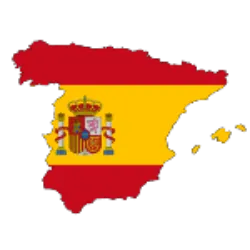Park Güell is one of the most iconic places in Barcelona, Spain
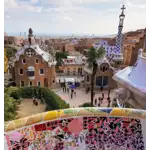
Park Güell is one of the most iconic places in Barcelona, Spain. It was designed by renowned Catalan architect Antoni Gaudí and opened as a public park in 1926. The park is an enchanting blend of surrealist architecture, lush landscapes and breathtaking views of the city. an exclusive residential community in a verdant area on the outskirts of Barcelona. Although the project was initially not completed as a residential area, the area has since become a park open to the public and is now considered one of the main tourist attractions in the city.
The Royal Palace of Madrid, located in the capital of Spain
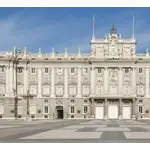
The Royal Palace of Madrid, located in the capital of Spain, is one of the most important and impressive sights in the city. It is the official residence of the Spanish royal family, although it is currently mainly used for official ceremonies, events and exhibitions. It was built in the 18th century, replacing the old Alcázar Real that was destroyed by fire in 1734. It was commissioned by King Felipe V and designed by architects Filippo Juvarra and Juan Bautista Sachetti. Construction of the palace took several decades and was completed in the reign of Charles III. The architecture of the Royal Palace is a mixture of styles, including Baroque and Neoclassical.
Test yourself with one of these challenges 👇
Discover some interesting facts about Spain Tourism
The Alhambra is a palace complex located in the city of Granada

The Alhambra is a palace complex located in the city of Granada, in southern Spain. It is one of the main tourist attractions in the country and an impressive example of Islamic and Moorish architecture. The construction of the Alhambra dates back to the 13th century, during the period when the Iberian Peninsula was ruled by Muslims. The complex was built as a fortress and royal palace for the Nazari kings of the Islamic dynasty. it is made up of several buildings, courtyards, gardens and fortifications. The most famous part is the Nasrid Palace, a collection of rooms and courtyards lavishly decorated with tiles, intricate stuccoes, Mocarab-style arches and beautiful interior gardens.
The Mosque-Cathedral of Córdoba, also known as the Great Mosque of Córdoba
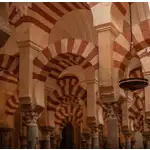
The Mosque-Cathedral of Córdoba, also known as the Great Mosque of Córdoba, is one of the most famous and impressive monuments in Spain. Located in the city of Córdoba, in the Andalusia region, the mosque is an outstanding example of Islamic and Christian architecture. Construction of the mosque began in the 8th century, during the period when Córdoba was the capital of the Caliphate of Córdoba, one of the main cultural and intellectual centers of the Islamic world. Over the centuries, the mosque has been expanded and renovated by different rulers, resulting in a unique structure that combines Islamic, Gothic, Renaissance and Baroque elements.
The Prado Museum, located in Madrid, Spain
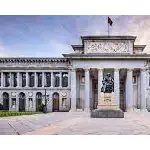
The Prado Museum, located in Madrid, Spain, is one of the most renowned art museums in the world. It houses a vast collection of masterpieces of European painting, sculpture, drawing and decorative arts, spanning from the 12th to the 19th century. It was founded in 1819, initially with the aim of displaying royal collections. Over the years, his collection has grown significantly, becoming a priceless artistic treasure. The main building of the museum is a magnificent neoclassical palace, built in the 18th century, which in itself is an architectural masterpiece. Among the most famous and important masterpieces of the Prado Museum are "Las Meninas" by Diego Velázquez, "The Garden of Earthly Delights" by Hieronymus Bosch, "The Surrender of Breda" by Velázquez, "The Annunciation" by Fra Angelico, "The Descent from the Cross" by Rogier van der Weyden, among many others.
The Sagrada Familia is an iconic basilica located in Barcelona, Spain
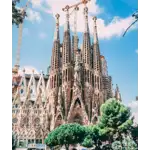
The Sagrada Familia is an iconic basilica located in Barcelona, Spain, and is considered one of the masterpieces of Catalan architect Antoni Gaudí. Its construction began in 1882 and is still in progress, with completion forecast for the coming decades. The basilica's facade features intricate ornamental details, carvings depicting biblical scenes, and tall spiers soaring into the sky. The interior of the Sagrada Familia is equally impressive, with a spacious central nave, columns resembling tree trunks, and dazzling natural light streaming in through colorful stained glass windows. Gaudí's design for the basilica also included the construction of three additional facades, each with its own symbolic meaning: the Birth Facade, the Passion Facade and the Glory Facade.
The Cathedral of Santiago de Compostela
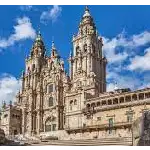
The Cathedral of Santiago de Compostela, located in the city of Santiago de Compostela, in the Galicia region of northwest Spain, is one of the main Christian pilgrimage destinations in the world. It is considered to be the final resting place of the Apostle James, whose remains are believed to be buried there. The cathedral's history dates back to the 9th century, when a shrine was built to house the alleged remains of St. James. Over the centuries, the original structure has been expanded and renovated several times, resulting in a blend of architectural styles including Romanesque, Gothic and Baroque.
Test yourself with one of these challenges 👇
HOME
